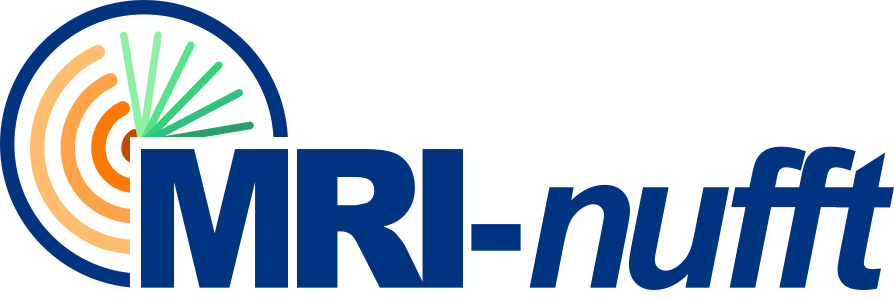initialize_3D_repi#
- mrinufft.trajectories.trajectory3D.initialize_3D_repi(Nc: int, Ns_readouts: int, Ns_transitions: int, nb_blades: int, nb_blade_revolutions: float = 0, blade_tilt: str = 'uniform', nb_spiral_revolutions: float = 0, spiral: str = 'archimedes', nb_trains: int | Literal['auto'] = 'auto', in_out: bool = True) ndarray[tuple[int, ...], dtype[_ScalarType_co]][source]#
Initialize 3D REPI trajectory.
This is an implementation of the REPI (Radial Echo Planar Imaging) trajectory proposed in [RMS22] and officially inspired from TURBINE proposed in [MGM10]. It consists of multi-echo stacks of lines or spirals rotated around any axis (here \(k_z\)-axis) in a radial fashion, but each stack is also slightly shifted along the rotation axis in order to be entangled with the others without redundancy. This feature is similar to choosing
skip_factorequal tonb_bladesin TURBINE.Note that our implementation also proposes to segment the planes/stacks into several shots, instead of just one. Spirals can also be customized beyond the classic Archimedean spiral.
- Parameters:
Nc (int) – Number of shots
Ns_readouts (int) – Number of samples per readout
Ns_transitions (int) – Number of samples per transition between two readouts
nb_blades (int) – Number of line stacks over the kz axis
nb_blade_revolutions (float) – Number of revolutions over lines/spirals within a blade over the kz axis.
blade_tilt (str, float, optional) – Tilt between individual blades, by default “uniform”
nb_spiral_revolutions (float, optional) – Number of revolutions of the spirals over the readouts, by default 0
spiral (str, float, optional) – Spiral type, by default “archimedes”
nb_trains (int, Literal["auto"], optional) – Number of trains dividing the readouts, such that each shot will be composed of n readouts with Nc = n * nb_trains. If “auto” then nb_trains is set to nb_blades.
in_out (bool, optional) – Whether the curves are going in-and-out or start from the center
- Returns:
3D REPI trajectory
- Return type:
NDArray
References
[RMS22]Rettenmeier, Christoph A., Danilo Maziero, and V. Andrew Stenger. “Three dimensional radial echo planar imaging for functional MRI.” Magnetic Resonance in Medicine 87, no. 1 (2022): 193-206.
